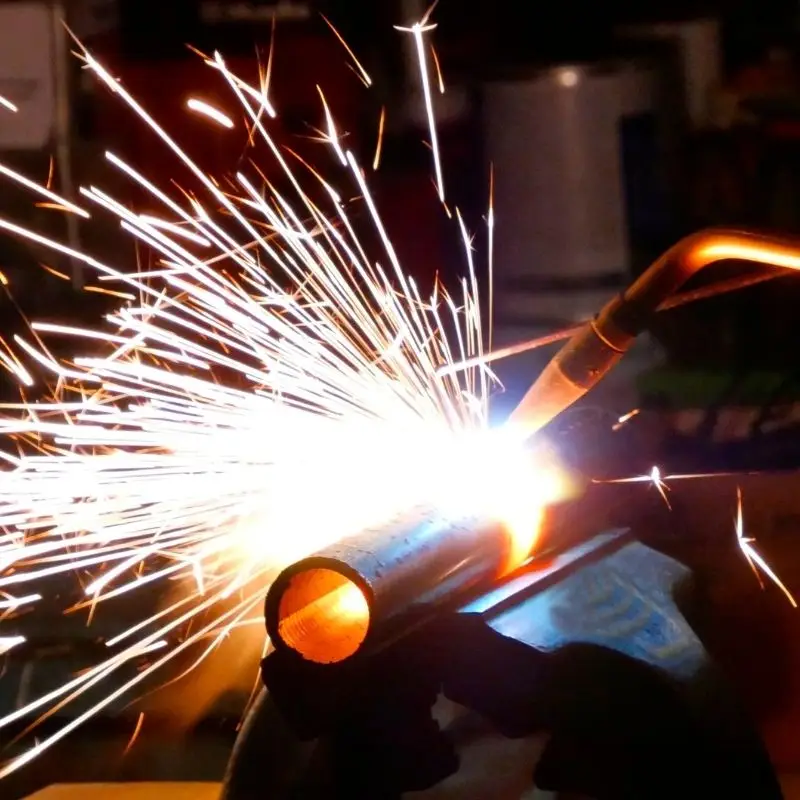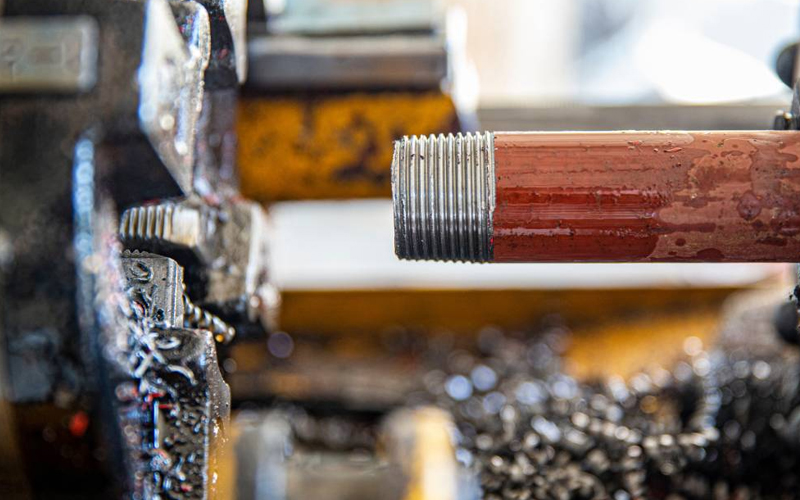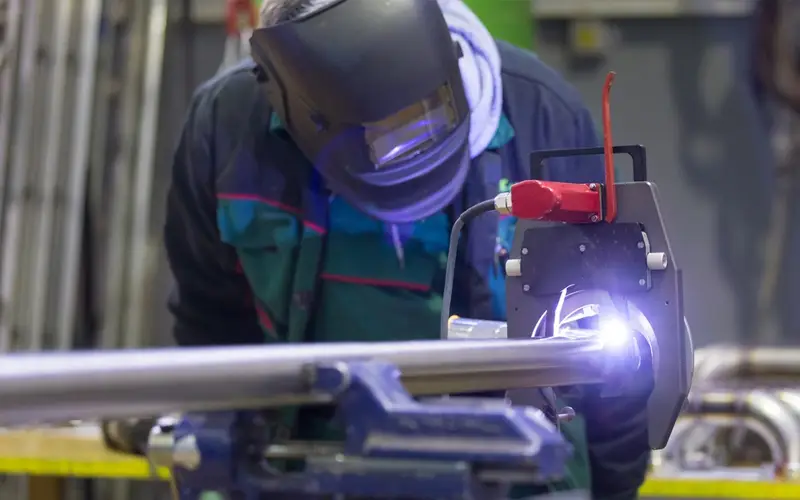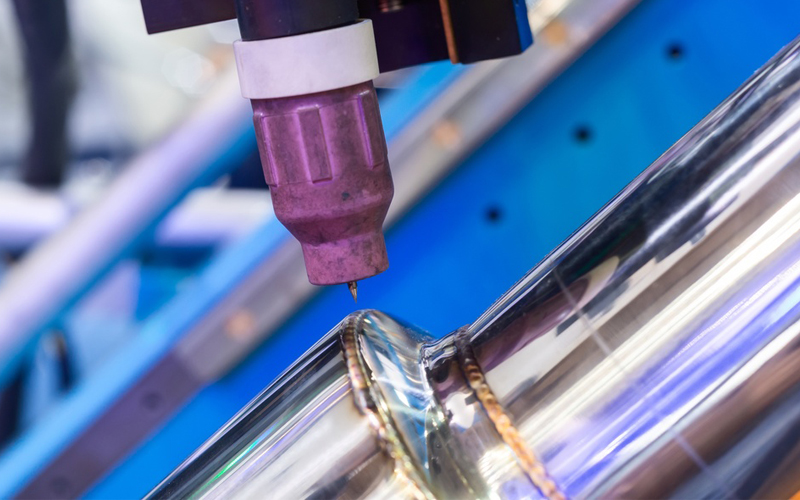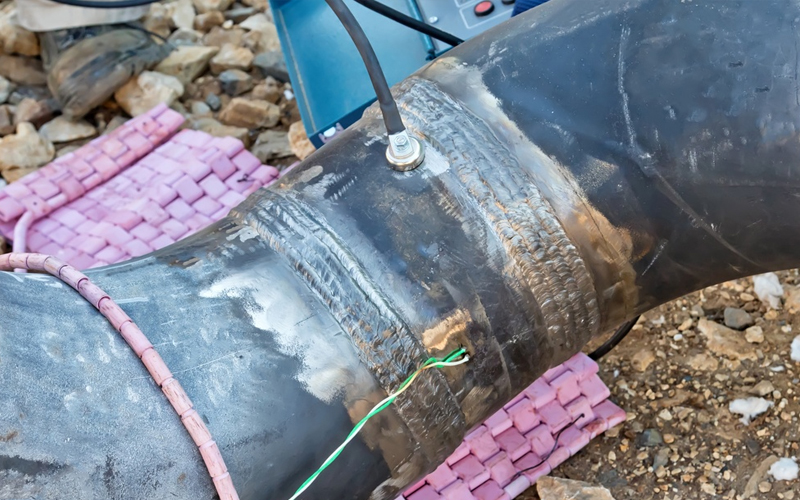Pipe beveling is a crucial step in preparing pipes for welding. A properly beveled pipe edge improves weld quality, increases joint strength, and reduces the chance of weld failure under pressure. Whether the goal is high-volume production or a single repair in the field, the choice of beveling tool directly impacts efficiency and safety.
Pipe bevelers come in a range of designs, from simple manual tools to advanced CNC systems. Each type offers unique advantages depending on the job site, material, and level of precision required. This blog is all about how and why pipe bevelers are used, focusing on the most common types and the value they bring to different applications.
Manual Pipe Bevelers
Manual pipe bevelers are the most basic type of beveling tool; many welders use them for quick, low-volume tasks, as they’re simple to use and cost-effective. They’re particularly useful for small jobs where power tools aren’t practical, such as repairs in confined environments or in the field where electricity or compressed air may not be available.
These tools are typically manually operated with a crank or lever system that rotates a cutting head around the pipe’s edge. Some designs resemble clamp-on systems, while others are more compact and designed for portability in tight or remote spaces.
Although they require more physical effort and skill to operate consistently, manual bevelers offer a dependable option for pipe techs and welders who need control over every cut. The tradeoff, of course, is speed. Manual bevelers are best for situations where precision is less critical, or where only a handful of bevels are needed.
Electric Pipe Bevelers
Electric pipe bevelers are motor-driven tools designed to deliver faster, more reliable bevels than their manual counterparts. These tools are powered by standard electrical outlets or industrial-grade power supplies and typically feature rotating cutting heads or grinding wheels that create clean, uniform bevels with minimal operator fatigue. Most models offer adjustable settings to accommodate different pipe diameters and bevel angles.
One of the main advantages of electric bevelers is their balance of portability and power. Even though they require access to electricity, they remain compact enough to use on-site, making them a popular choice for contractors and fabrication teams alike.
Electric bevelers are common in controlled environments, such as workshops or industrial job sites, and are ideal for projects involving carbon steel, stainless steel, and other common piping materials that require precision and speed without the need for heavy infrastructure.
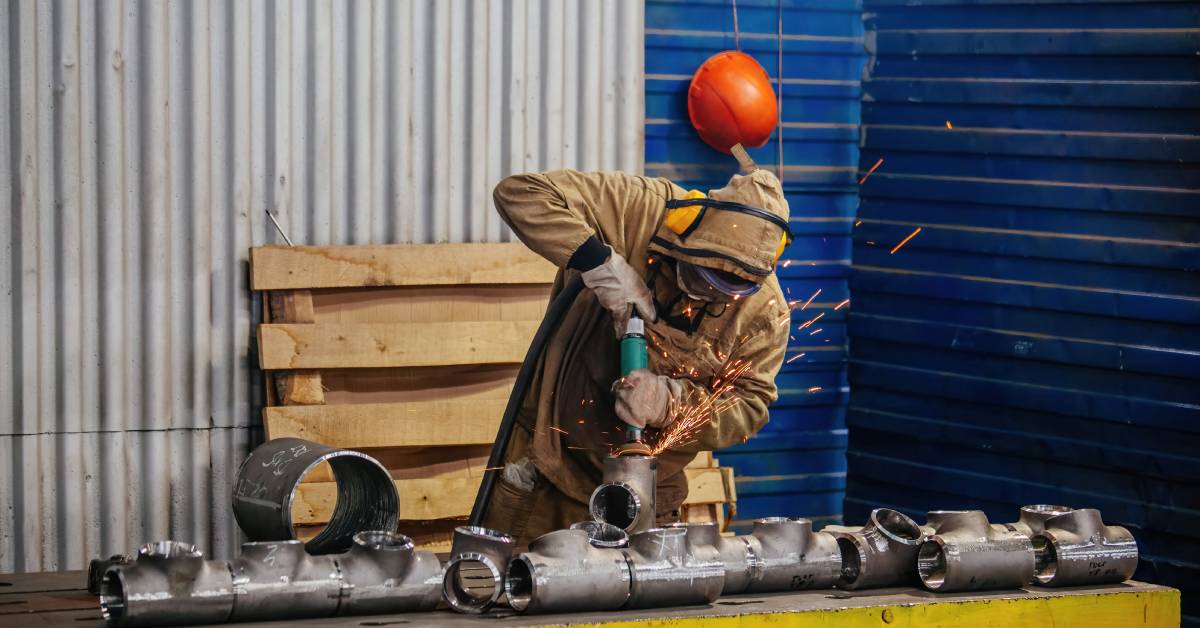
Pneumatic Pipe Bevelers
Pneumatic pipe bevelers operate using compressed air and offer a powerful alternative to electric models. They also provide strong torque and high rotational speed, making them effective for tough materials and heavy-duty use.
These tools are particularly valued in hazardous environments where flammable gases or combustible dust may be present. Since they don’t generate electrical sparks, pneumatic bevelers meet safety requirements in industries such as oil and gas, petrochemicals, and power generation.
Like electric bevelers, welders can equip pneumatic pipe bevelers with cutting heads or grinding attachments. They are also compatible with various pipe sizes. Their relatively compact design allows for on-site use in remote or restricted-access areas, given that a reliable air supply is available.
Portable Pipe Bevelers
Portable pipe bevelers are designed for mobility and flexibility, making them essential tools for fieldwork and remote job sites. While they can be manual, electric, or pneumatic, what sets them apart is their lightweight design and ease of transport.
The main advantage of portable bevelers is their ability to bring the tool to the workpiece, rather than requiring the pipe to be moved to a stationary machine. This flexibility is particularly valuable in pipeline construction, shipbuilding, and structural steel work, where welders must bring equipment directly to large, immobile sections of pipe.
Despite their compact size, portable bevelers offer adjustable settings for pipe diameter and bevel angle. You can clamp many models directly onto the pipe and operate in tight spaces or difficult positions, such as overhead or at ground level. They are also engineered for rugged use and often include quick-change tooling to minimize downtime on-site.
Stationary Pipe Bevelers
Stationary pipe bevelers are heavy-duty machines designed for high-volume, precision work in controlled environments. These units are typically floor- or bench-mounted and engineered to handle repetitive beveling tasks with consistent results. Stationary bevelers are common in fabrication shops, manufacturing plants, and other fixed facilities, where welders must prepare large numbers of pipes efficiently.
Because they are anchored in place, stationary bevelers can incorporate more powerful motors and larger cutting heads than portable units. Thus, workers can process thicker materials, larger pipe diameters, and more complex bevel profiles with greater speed and accuracy.
Most models feature built-in fixturing systems to securely hold pipes during the cutting process, thereby minimizing vibration and reducing the likelihood of operator error. Stationary bevelers can deliver professional-grade results at scale when paired with skilled operators and proper tooling, making them indispensable in production settings.
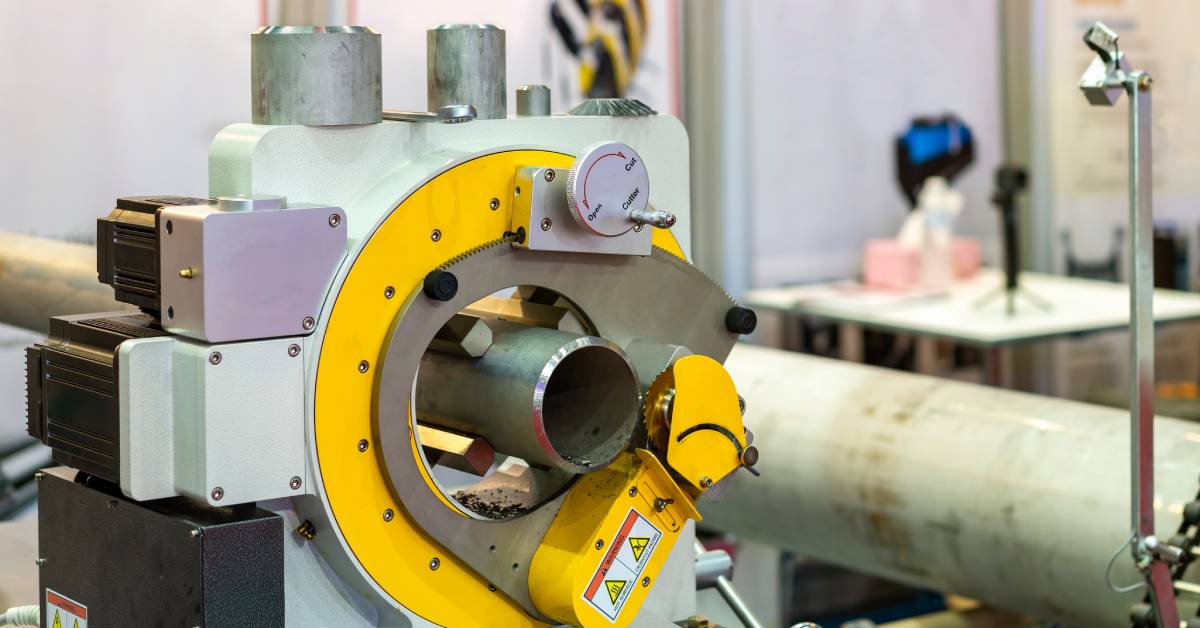
Auto-Feed Pipe Bevelers
Auto-feed pipe bevelers are semi-automated tools that streamline the beveling process by automatically advancing the cutting head along the pipe’s edge. Auto-feed bevelers offer smoother, more uniform bevels across multiple cuts by reducing manual effort and ensuring a consistent feed rate.
Operators initiate and monitor the process without needing to control the cutting motion manually. It’s a smart choice for operations that require repeatable results but don’t yet need the complexity or investment of fully automated systems.
Auto-feed models can handle a range of pipe diameters and materials, and many are available in portable and stationary formats. Adjustable settings allow for different bevel types and depths, making them versatile enough for varied project requirements.
Many welders use auto-feed bevelers in mid- to high-volume fabrication environments to reduce operator fatigue and improve cycle times without sacrificing quality. They’re a natural next step for shops transitioning from manual or basic powered tools toward more automated workflows.
CNC Pipe Beveling Machines
CNC pipe beveling machines represent the most advanced category of beveling equipment, offering fully automated, computer-controlled precision. Welders can program these systems to execute exact bevel dimensions, angles, and patterns, rendering them invaluable for high-specification projects that demand repeatability and tight tolerances. CNC machines can process large volumes of pipe with remarkable speed and accuracy with minimal manual intervention.
CNC bevelers are capable of handling complex bevel profiles and integrating with broader digital workflows, including systems that involve robotic welding equipment, making these machines a necessity.
The primary advantages of CNC bevelers lie in their ability to reduce human error. Although the upfront investment is higher, the long-term return is substantial, particularly in fabrication shops and industrial manufacturing facilities.
Investing in the Right Equipment
Understanding all about how and why pipe bevelers are used is the foundation for choosing the right equipment for the job. The right beveling solution dramatically improves quality, safety, and efficiency, whether you’re preparing pipe for critical welds in a fabrication shop or tackling fieldwork in challenging environments.
If you’re looking for dependable, high-performance beveling tools, turn to SEC Industrial. We offer a full range of sales and rental solutions tailored to your specific needs, from portable manual options to advanced CNC pipe beveling machines.
Reach out today to learn how the right tools can move your operation forward.
